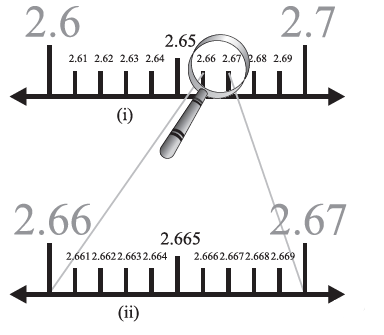#Natural Number
- Dhruv Thakar
- May 1, 2020
- 3 min read
Introduction
What is Natural Numbers?
Set of counting numbers is called the Natural Numbers
N=1,2,3,4,5,...N=1,2,3,4,5,...
What is whole number?
Set of Natural numbers plus Zero is called the Whole Numbers
W=0,1,2,3,4,5,....W=0,1,2,3,4,5,....
Note:
So all natural Number are whole number but all whole numbers are not natural numbers
Integers
Lets look at what are integers
Integers is the set of all the whole number plus the negative of Natural Numbers
Z=..,−7,−6,−5,−4,−3,−2,−1,0,1,2,3,4,5,6,..Z=..,−7,−6,−5,−4,−3,−2,−1,0,1,2,3,4,5,6,..
Note
So integers contains all the whole number plus negative of all the natural numbers
the natural numbers without zero are commonly referred to as positive integers
The negative of a positive integer is defined as a number that produces 0 when it is added to the corresponding positive integer
natural numbers with zero are referred to as non-negative integers
The natural numbers form a subset of the integers.
Rational and Irrational Numbers
Rational Number
: A number is called rational if it can be expressed in the formpqpqwhere p and q are integers ( q> 0).
Example :1/2,4/3,5/7,11/2,4/3,5/7,1etc.
Important Points to Note
every integers, natural and whole number is a rational number as they can be expressed in termsof p/q
There are infinite rational number between two rational number
They either have termination decimal expression or repeating non terminating decimal expression.SO if a number whose decimal expansion is terminating or non-terminating recurring then it is rational
The sum, difference and the product of two rational numbers is always a rational number. The quotient of a division of one rational number by a non-zero rational number is a rational number. Rational numbers satisfy the closure property under addition, subtraction, multiplication and division.
Irrational Number
A number is called rational if it cannot be expressed in the form p/q where p and q are integers ( q> 0).
Example :√3,√2,√5 etc
Important Points to Note
Pythagoras Theorem: In a right-angled triangle, the square of the hypotenuse is equal to the sum of the squares of the other two sides. Using this theorem we can represent the irrational numbers on the number line.
They have non terminating and non repeating decimal expression. If a number is non terminating and non repeating decimal expression,then it is irrational number
The sum, difference, multiplication and division of irrational numbers are not always irrational. Irrational numbers do not satisfy the closure property under addition, subtraction, multiplication and division
Real Numbers:
All rational and all irrational number makes the collection of real number. It is denoted by the letter R
We can represent real numbers on the number line. The square root of any positive real number exists and that also can be represented on number line
The sum or difference of a rational number and an irrational number is an irrational number.
The product or division of a rational number with an irrational number is an irrational number.
This process of visualization of representing a decimal expansion on the number line is known as the process of successive magnification
What is Number Line
A number line is a line which represent all the number. A number line is a picture of a straight line on which every point is assumed to correspond to a real number and every real number to a point
We most shows the integers as specially-marked points evenly spaced on the line. but the line includes all real numbers, continuing forever in each direction, and also numbers not marked that are between the integers.

It is often used as an aid in teaching simple addition and subtraction, especially involving negative numbers.
The number on the right side are greater than number on the left side
Each of the number explained above can be represented on the Number Line.
Natural Number,whole Number and integers can be easily located on the number line as we picture as per them
Now Real number can be either decimal expression or number explained in point 1. It is easy to located the latter one. For decimal expression, we need to use the process of successive Magnification
Number like √33 can be represent on number like using pythogorus theorem
What is process of successive Magnification
Suppose we need to locate the decimal 2.665 on the Number line. Now we know for sure the number is between 2 and 3 on the number line. Now lets divide the portion between 2 and 3 into 10 equal part.Then it will represent 2.1,2.2...2.9 . Now we know that 2.66 lies between 2.6 and 2.7.Now lets divide the portion between 2.6 and 2.7 into 10 equal parts. Then these will represent 2.61,2.62,2.63,2.64,2.65,2.66...2.69. Now we know that 2.665 lies between 2.66 and 2.67 .Now lets divide the portion between 2.66 and 2.67 into 10 equal parts. Then these will represent 2.661,2.662,2.663,2.664,2.665,2.666...2.669. So we have located the desired number on the Number line. This process is called the Process of successive Magnification






Comments